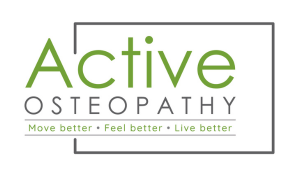Osteopathy, Physiotherapy or Chiropractic?
In this day and age, we are often presented with a dizzying array of choices and the volume of choices we need to make only seems to be increasing. A few decades ago, the local supermarket would have a few dozen items available in the produce section to choose from; today the produce section can offer hundreds of items to choose from! Similarly, a few decades ago, if you hurt your back you could either ignore it and hope it got better on its own, or book an appointment to see your doctor.
Now if you injure your back you can see a G.P. or an Osteopath, or a Chiropractor, or a Physiotherapist, or a Rolfer, or an Acupuncturist, or…the list just goes on and on. This continuing escalation of choices isn’t convenient; it’s overwhelming! Unless you have had previous experience visiting a therapist it can be difficult to know what will be right for you. Searching the internet can be helpful, but often all that you find through google are sales pitches that don’t allow you to compare your options.
This article aims to help you make a more informed choice about where to go if you are unfortunate enough to experience an injury. It will focus on three of the more popular choices for pain and injury rehabilitation; Osteopathy, Physiotherapy, and Chiropractic.
SOME SIMILARITIES:
There are many reasons people may seek help from an Osteopath, Physiotherapist or Chiropractor, and plenty of benefits provided by each option. All of these professions are focused on helping you regain your health – they just go about it in slightly different ways.
In New Zealand, Osteopaths, Physiotherapists, and Chiropractors are all classified as primary healthcare providers, which means that they are all able to diagnose and treat a wide range of musculoskeletal and pain conditions. They are also all able to access ACC to help fund the treatment of injuries caused by accidents. If your condition requires medical assessment or management, they are all able to arrange to images such as x-ray or ultrasound (MRI usually requires specialist referral) or referral to an appropriate specialist or back to your GP.
All three professions require four to five years of tertiary education to use their titles. This means that regardless of your choice, you can be confident that they have obtained comprehensive training in the assessment and management of a wide range of conditions.
SOME OF THE DIFFERENCES:
Osteopathy: Osteopathy aims to reduce pain and return the patient to full
function as quickly as possible. This is achieved first by assessing how the body moves and a hands-on assessment of the tension within the muscles and joints to correctly identify the cause of the problem. Once a diagnosis is established, they address dysfunction to assist the body’s ability to regulate and heal itself. Osteopaths use a wide range of manual techniques including soft tissue massage, joint articulation, and manipulation, and often also include self-help strategies and exercises to help speed recovery.
Physiotherapy: At the core of musculoskeletal physiotherapy is the patient’s involvement in their own care and rehabilitation. Therefore, much of the time is spent on exercise prescription and explanation in an attempt to empower the patient to participate in their own recovery rather than providing more passive hands-on treatment such as massage or manipulation.
Chiropractors: Treat mechanical disorders of the musculoskeletal system, using their hands to treat joints and muscles. They use a range of techniques but their emphasis is on manipulation “cracking” of the spine to reduce tension and to align the spine to allow proper function of the nerves. Chiropractors will also often utilise x-rays to aid in diagnosis as they believe that precise spinal alignment is important for health. Chiropractors graduate with the ability to use the title ‘Doctor’ before their names, however, they are not medical doctors.
Any one of these approaches may be beneficial. Some people may find Osteopathic treatment works best for them and others prefer Physiotherapy or even a combination of two or three approaches; everyone is different. The crucial thing is to find a qualified health professional with a good reputation who understands your complaint and provides a personalised treatment plan.


